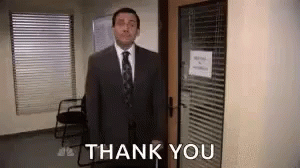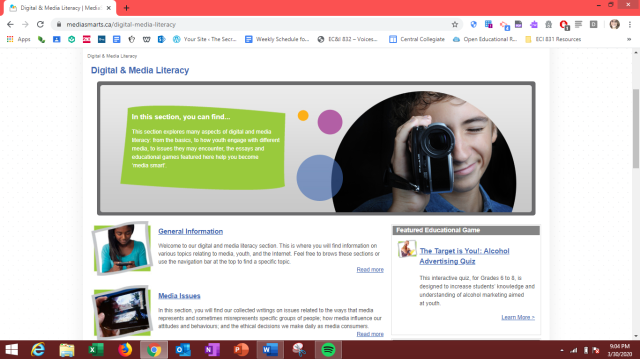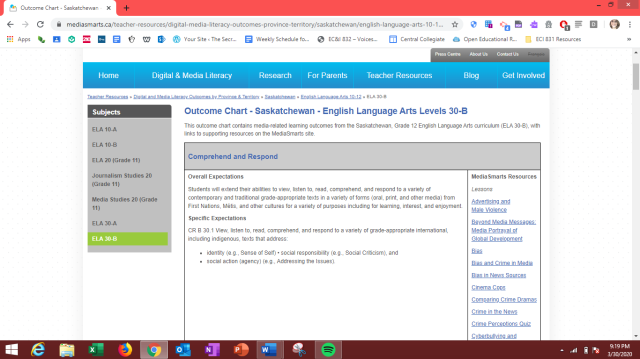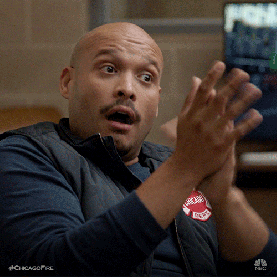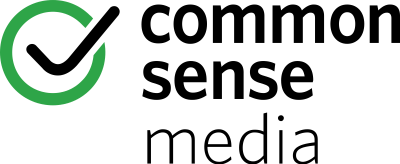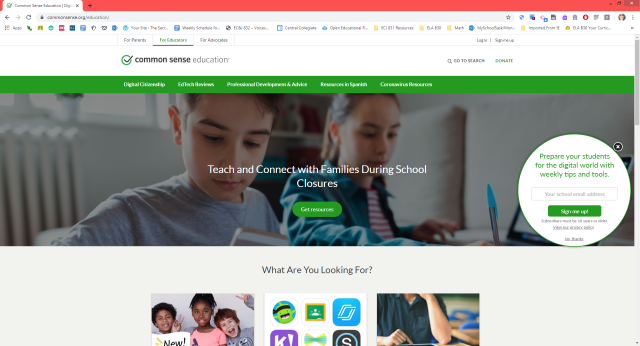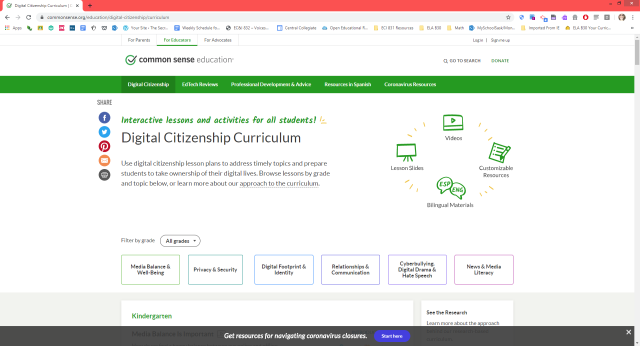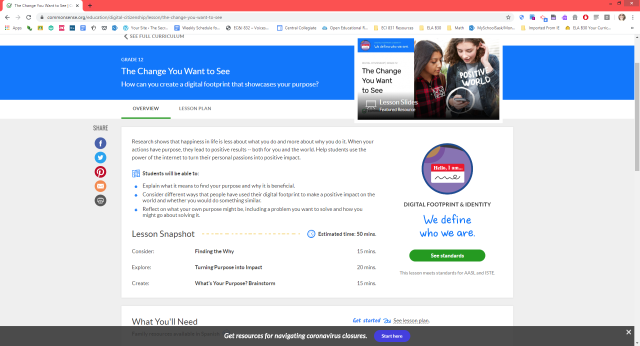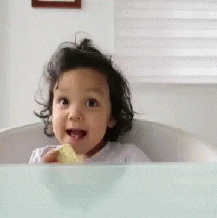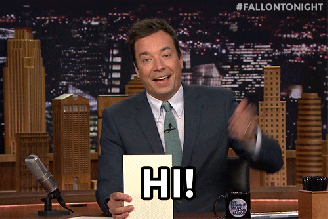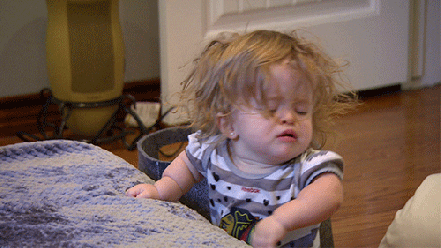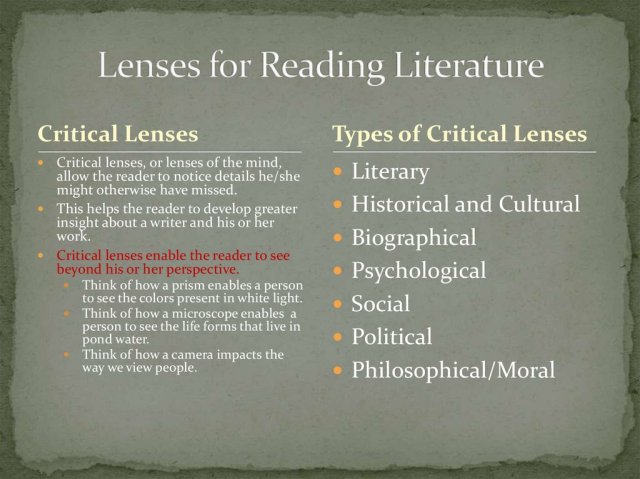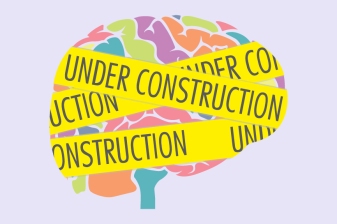Well team, we finally made it to the end. I don’t know about you, but this was a LONG semester, and yet felt like the fastest one ever. I don’t think any of us could have anticipated the events that unfolded between January and now. It’s taken its toll of us all, but that doesn’t take away from the amount of information and skills we learned over the semester. I can say I am very glad to have had the opportunity to learn with all of you and have such a great support group over the past few weeks. It’s definitely helped with the transitions to our online teaching worlds and I can say I am happy with my final product of my major project. I’m sure if I had still had students, I would have made a few more adjustments, but overall, I am happy with my Digital Citizenship unit plan I created and used in my ELA B30 classroom this semester.
It all started with an idea: connect digital citizenship with my ELA B30 curriculum. The outcomes line up nicely, and I have tried in the past, but it’s always been a stand-alone lesson or unit. This time I wanted to integrate the ideas, start with explicit teachings and eventually work the ideas and strategies into everything we do in the classroom. Whether it was Shakespeare, literature, or a film, I wanted my students to think about the content critically and ask questions about purpose, techniques, and themes. You can view my outline here!
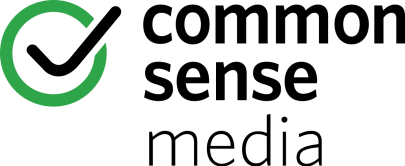 Once I had an idea of where I wanted things to go, the planning began. How do I construct this? I was incredibly busy in January with basketball, finals, and marking so my project took a backseat, but it was always in the back of my mind, and research ensued. I began looking at Digital Citizenship Education in Saskatchewan Schools, and more specifically, the Digital Citizenship Continuum from K to 12. This document really helped me morph my topics and essential questions I wanted to address in my unit plan. I also consulted Mark Ribble and his Nine Elements of Digital Citizenship to help decide which categories I wanted to really focus on. I wanted to hit them all, but although I managed to create an outline of how to do this throughout the semester, I really focused
Once I had an idea of where I wanted things to go, the planning began. How do I construct this? I was incredibly busy in January with basketball, finals, and marking so my project took a backseat, but it was always in the back of my mind, and research ensued. I began looking at Digital Citizenship Education in Saskatchewan Schools, and more specifically, the Digital Citizenship Continuum from K to 12. This document really helped me morph my topics and essential questions I wanted to address in my unit plan. I also consulted Mark Ribble and his Nine Elements of Digital Citizenship to help decide which categories I wanted to really focus on. I wanted to hit them all, but although I managed to create an outline of how to do this throughout the semester, I really focused 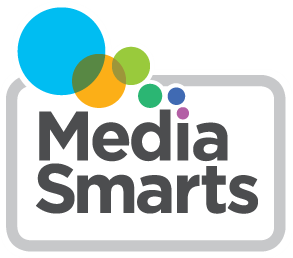 on three: Digital Literacy, Digital Law, and Digital Rights and Responsibilities. You can check out my second update here, where I outline more of my ideas and explain how I will integrate each of the elements into my unit plan. I also reviewed Common Sense Media and Media Smarts because during my research, I found a lot of helpful tips, lesson ideas, and connections on these websites. You can check out those reviews here and here!
on three: Digital Literacy, Digital Law, and Digital Rights and Responsibilities. You can check out my second update here, where I outline more of my ideas and explain how I will integrate each of the elements into my unit plan. I also reviewed Common Sense Media and Media Smarts because during my research, I found a lot of helpful tips, lesson ideas, and connections on these websites. You can check out those reviews here and here!
Of course, things don’t always work out the way you want them to, and as I began actually writing out lesson plans and creating projects for my students, I realized some ideas were too big to tackle, but others would work seamlessly. I wanted to trial all the assignments with my students, and I did until the very end, so I am confident the flow and actual process worked. I began my semester with our Global Issues unit, and we focused on fact-checking and finding purpose to content. You can see my next update here I focused my discussion on trying to make our class conversations and projects meaningful. I wanted this to seep into the rest of our semester, so it was going to take a lot more work to initiate the mindset I wanted for my students. Finally, things started to come together, and you can see my last update here where I posted my unit outline, connecting my outcomes to my project ideas and to Ribble’s Nine Elements. I finally had physical assignments, projects, and discussions that my students had even tried already, with examples.
And then we came to a screeching halt. COVID-19 took over my classroom, and I barely got to finish our presentations before schools were closed and I rushed to say goodbye to my students. I would have liked to wrap things up properly, get some real feedback and see if the strategies would have taken hold in the rest of the semester. Hopefully next year I can try it again, make some more tweaks and see how it flows throughout an entire semester. Before the end though, I had moments where I knew I had made a difference on my students’ digital literacy. Students were ranting and panicking over COVID and as I tried to calm them down, one student yelled out a statistic (one of those meant to instill fear and panic). Anther student spoke up, and asked, “But did you fact-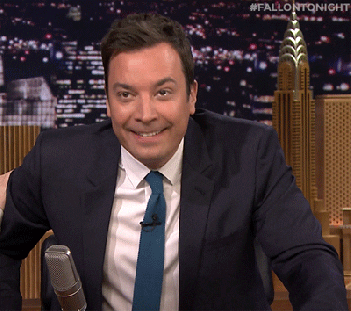 check?” and then proceeded to look at me and say, “I’ve been fact-checking everything lately.” It might not have been a huge thing (who am I kidding? I wanted to scream I was so excited!!), but it meant that I had done something to affect their thinking and how they view the information they find online. That was the last day of classes we had, and I would say it was a pretty positive note to end my unit trial on, if nothing else.
check?” and then proceeded to look at me and say, “I’ve been fact-checking everything lately.” It might not have been a huge thing (who am I kidding? I wanted to scream I was so excited!!), but it meant that I had done something to affect their thinking and how they view the information they find online. That was the last day of classes we had, and I would say it was a pretty positive note to end my unit trial on, if nothing else.
Overall, I am happy with how my project turned out and you can check out my fully detailed lessons, resources, and unit plan here on Google Classroom. Use the code: fqyyiyv to log in. Please check out my graphic organizers for research and solutions, as well as my text critique assignment outline for a couple highlights. I even created two videos for my students to watch. One on Aristotle’s Appeals, and another on media literacy techniques. Please watch them and let me know what you think. Feel free to borrow anything you like, use it in your classroom and give me feedback above all else!! This unit plan is flexible and can be taught all as one piece or be spread out in a larger unit, integrating poetry, non-fiction, and other literature as well. I had a lot of fun creating this unit and connecting it to digital literacy in a way I didn’t think I could ever in a grade 12 classroom. I’m quite proud of it, and hope you enjoy it.
Good luck everyone in your futures and I wish you all the best in these unconventional times.
Until next time,
Shelby


